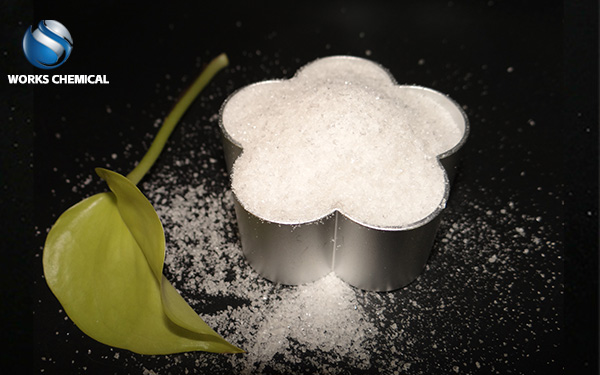
Traditional dewatering agents (such as lime) achieve dewatering by adjusting the pH value, neutralizing the acidity of sludge and promoting flocculation, but they have problems such as increased sludge volume, equipment corrosion and limited resource utilization. Sludge enhancers, as a new alternative solution, have demonstrated significant advantages in dewatering efficiency, environmental friendliness and economy. The following is a specific comparative analysis:

I. Limitations of Traditional Dehydration Agents (Lime)
Sludge increment
Lime (CaO) reacts with water to form calcium hydroxide (Ca(OH)₂), which expands by about 1.5 times in volume, resulting in a 30%-50% increase in the total amount of sludge and significantly raising the cost of subsequent treatment.
The dehydration effect is limited.
Lime mainly promotes flocculation by neutralizing acidity, but it is difficult to break the cell walls of microorganisms to release intracellular water. The moisture content of sludge usually only drops to 75%-80%, and a large amount of energy is still needed for deep dewatering.
Environmental and resource utilization obstacles
Sludge with a high pH value (above 12) corrodes equipment and damages soil structure during landfill.
Calcium salt crystallization affects the fertilizer efficiency of sludge and limits its utilization as fertilizer or soil conditioner.
High operating costs
The amount of lime used is large (10%-30% of the dry sludge volume), and it is necessary to be equipped with acid washing equipment to neutralize the residual alkalinity, which increases the cost of chemicals and equipment maintenance.
Ii. The core advantages of sludge enhancers replacing lime
The dehydration efficiency has been significantly improved
Mechanism: The organic flocculants and surfactants in the sludge enhancer work in synergy to break down the surface charge of sludge particles, promote flocculation and release bound water. Break down the cell wall and release intracellular water.
Effect: The moisture content of sludge can be reduced to below 60% (15%-20% lower than that of lime treatment), significantly reducing the volume of sludge and lowering energy consumption in processes such as filtration and drying.
Two. Breakthroughs in sludge reduction and resource utilization
Reduction: By breaking cells and releasing water, the total amount of sludge is reduced by 30% to 50%, significantly lowering transportation and disposal costs.
Resource utilization
Fertilization: After the decomposition of organic matter, the nitrogen and phosphorus in the sludge are more easily absorbed by plants, meeting the standard of "Sludge Disposal for Urban Sewage Treatment Plants - Quality of Sludge for Landscaping".
Energy utilization: After improving the dewatering property, the efficiency of anaerobic digestion for biogas production increases by 20% to 30%, or it can be used as raw material for biomass fuel.
Three. Environmental protection and economic optimization
Reduce secondary pollution
Avoid high pH value of leachate caused by lime (reduce the dosage of neutralizing agent).
Decompose odorous substances (such as hydrogen sulfide) and improve the working environment.
Cost savings
The dosage of the reagent is only 1/5 to 1/10 of that of lime, and the comprehensive treatment cost is reduced by more than 30%.
Sludge reduction directly lowers landfill costs or the demand for incineration calorific value.
Four. Equipment compatibility and process simplification
No major equipment modification is required: The sludge efficiency enhancer can be adapted to existing equipment such as plate and frame filter presses and centrifuges.
Process simplification: Omit the acid washing step after lime treatment and reduce the operation links.
Iii. Alternative Cases and Data Support
A certain municipal sewage treatment plant
After using the sludge enhancer to replace lime, the sludge moisture content dropped from 78% to 58%, the sludge volume decreased by 45%, the operation time of the filter press was shortened by 50%, and the annual treatment cost was reduced by 1.2 million yuan.
Industrial sludge treatment
For papermaking sludge, the sludge enhancer reduces the sludge volume by 60%, increases the organic matter decomposition rate to 40%, and raises the incineration calorific value by 15%, achieving energy self-sufficiency.
Iv. Issues to be Noted in Substitution
Sludge property adaptability: The type and dosage of sludge enhancer need to be adjusted according to the type of sludge (such as municipal/industrial, organic matter content).
Initial commissioning cost: The optimal dosage and mixing conditions need to be determined through small-scale tests, which may increase short-term costs.
Supplier selection: Give priority to suppliers that provide technical services to ensure process stability.
Conclusion
Sludge enhancers can comprehensively replace traditional agents such as lime through efficient dewatering, sludge reduction, resource utilization promotion and environmental protection improvement. Its comprehensive cost advantage (chemicals + treatment + disposal) is significant, making it particularly suitable for projects that have resource utilization requirements for sludge disposal. It is suggested to conduct pilot projects gradually and formulate alternative plans in combination with the nature of the sludge and the disposal goals.